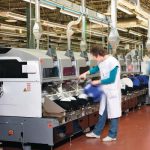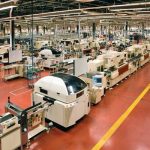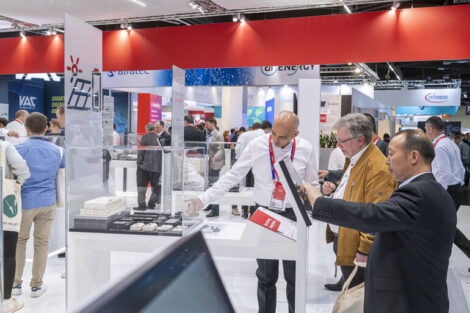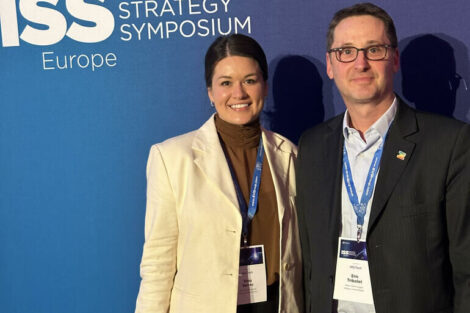How does a western European EMS provider survive a downturn such as the one we are currently experiencing? Even prior to the crisis, western European EMS providers were losing business hand over fist, first of all to the Asian, then to the Central and Eastern European (CEE) countries. Benelux EMS provider tbp electronics shows: EMS survival is a question of innovation, flexibility and perfection.
Western European EMS providers have already seen their market shrink, with more than 50% of manufacturing being undertaken in the CEE. Growth projections are expected in the CEE countries, where labour costs are much lower. The East European market, worth $10.0 billion in 2008 is projected to reach $21.1 billion in 2013 (according to Frost & Sullivan) while the recession hit Asian EMS markets now pose less of a threat.
Benelux EMS provider tbp electronics has however proved otherwise. Via smart acquisition, private ownership and an innovative commitment to improvement, the company has continued to grow. It is not by chance that tbp electronics has seen its Geel site in Belgium successfully transformed from an ex. Alcatel-Lucent cost centre into a successful customer focused enterprise turning over in excess of 120 million Euros. Unlike others, tbp electronics has been hiring rather than firing people and now employs almost 500. Its customer base has increased significantly.
Even before Alcatel-Lucent’s decision in 2003 to become a ‘fabless’ company, the now tbp electronics Geel site had been under threat of closure. The Geel management team’s vision was that it had enough skills and capabilities to be successful. It was only due to the Business Process Management (BPM) initiatives put in place by the Geel management team, under the direction of Anton Hermus, tbp electronics Belgium’s Chief Operating Officer, that the site survived until 2007. After that, it took investment from forward-looking people like Ton Plooy, CEO and founder of tbp electronics Netherlands to keep the site open. It is no wonder that Ton Plooy did not hesitate to invest in the Geel site – the attitudes and philosophy of the Geel management mirror perfectly those of tbp electronics in the Netherlands – the Geel team undoubtedly has a perfectionist approach! For Plooy, the acquisition has enabled tbp electronics to strengthen its broadcast and telecoms offering. Today, tbp electronics specialises in the telecommunications, broadcast, media, entertainment, graphics, ICT, industrial, petrochemical, construction, shipping, medical and defence sectors.
Under the innovative approach of the Geel management team, the tbp Geel site has seen a drastic increase in turnover, on-time delivery has improved by 130%, work in process has improved by 60%, excess and obsolete stock has decreased by 65%, and inventory has decreased by 33%. In only 62 days, a new ERP-system was put in place resulting in a 10-fold decrease in running costs over the former system.
So, how has this been achieved? Jos Corstjens: “It takes ‘thinking outside the box’ and a ‘never give up’ attitude!” The Geel site had an excellent reputation for its technical capability and quality but a bad reputation for ‘on time delivery’. This was due to a lack of local commitment, essentially caused by centrally controlled planning. As a consequence, the company was constantly ‘fire fighting’. Under the Geel management team’s determined guidance, the company has successfully transformed itself from an organization focused on technological process excellence to one focused on systematic business process improvement.
“The real challenge is to get things done through people; to lead a team of 400 people through two transformations takes good communication, which is why we set up a multifunctional BPM-board (Business Process Management-board) and now organise quarterly all-staff meetings,” explained Corstjens. “It also requires a clear definition of the skills required. Therefore, a companywide skills management system was set up. Lastly, one needs to involve all the people ‘on board’ and, therefore, we organised an initiative to obtain an improvement action from every employee within a one-week time frame. This action was vital for the launch of our Lean Initiative project.”
Tbp’s approach involved 3 essential steps
The first step was to set up a core team that worked on ‘creating more time’ in order to work on ‘improvements’. Ironically, as no-one had enough time, the 40-strong team had to set a weekend aside for a brain-storming session – this resulted in 11 project proposals!
The second step was to reinvent the ‘ideal factory’, referred to as IF. The starting point was: If they were to set up a new factory, what would they do differently? What would they improve and what would they simplify? These questions led to the key theme: “keep it simple, visual, and autonomous.” One of the major conclusions of this step was that the Geel team would have to come up with its ‘own’ commitment, instead of a ‘dictated’ central commitment.
As people saw this approach working, the core team gained increasing recognition. The third step was to simplify the processes in order to improve performance. This implied that most of the operators would have to learn several jobs instead of one job/process/machine. Today, an operator knows on average 3.8 jobs while he/she used to know less than 2 in the past. Tbp is now on a strict bottleneck steering principle, but the results have put them at a best in class level while offering more job-satisfaction and flexibility. This approach has proven to be successful and today, the organisation widely recognises business process issues and flags/reports them to the proper business process key user.
These steps put the Geel site at a service performance level that enabled it to consider autonomy, but the management team still had to convince the employees and trade unions that this was really the way forward.
In order to build-up employee trust, the ‘Geel in Motion’ team (GIM) was set up to take care of internal communications. The GIM team comprised 7 enthusiastic young employees with the potential of developing into next generation managers. Each received mini-MBA training and worked out a business plan for the site; the result was a motivated team that believes in the viability of an autonomous EMS enterprise. On the day that the announcement was made that the Geel site would become tbp electronics Belgium, the GIM team sat together with groups of employees and explained why they believed in the future success of the company. This was instrumental in making the change without any social actions.
However, although employees were committed to tbp’s future success, it still remained to convince the trade unions. For that purpose, Corstjens used a creative tool from what he refers to as his ‘creatopia’ days. This tool measures the ‘climate for change’ (or creative climate) in organizations and enables tbp to pinpoint and address any issues in the relationship between the trade unions and management.
Tbp’s vision is to be a leader in excellence and, with this in mind, runs many projects comprising: BPM on all processes, Lean in the Office and on the Factory Floor, 6 sigma on technical processes, customer satisfaction measurement and improvement, supplier measurement and improvement, and environmental relationship improvements. The company regards these projects as key to its strategy if it is to keep moving in the right direction. The major challenge for tbp electronics is to manage and communicate interactions and interrelationships throughout the company. “For our employees, understanding what needs to be done and that it needs to be done together, and right now, is not necessarily obvious. So, how we drive this management and this communication will be the next challenge and, no doubt, a learning curve,” concludes Corstjens. Impressive performance improvements at the Geel site aside, tbp continues its growth strategy in other areas. In 2008, it added a Supply Chain Services division by creating Aprolog nv in a joint venture with Belgian based NovaNatie.
According to Ton Plooy, the EMS challenges began way before the current crisis. In order to remain successful, the EMS provider, who previously offered only manufacturing services has had to quickly evolve – first of all, by offering design services and, more recently, repair and logistics services. The EMS provider now effectively needs to become an integrated EMS provider and that is exactly what tbp electronics has become. Via Aprolog, tbp electronics provides logistical and after sales (repair, refurbishing and end of life) solutions. Interestingly, tbp electronics does not see Asia and Eastern Europe as a long-term threat. The company has positioned itself as a ‘near-source’ partner to its customers, concentrating on the Benelux, France, United Kingdom and Germany, where it has now expanded its services by opening a Sales Office in Southern Germany. According to Plooy, tbp wins over the Asian and CEE countries by the fact that it keeps inventories to a minimum; as a nearby EMS source, it is more flexible and can quickly implement last order changes to both design and order quantities.
eppe517
Zusammenfassung
Schon vor der Krise verloren westeuropäische EMS-Unternehmen Aufträge – zu Gunsten der Wettbewerber in Asien und Osteuropa. Wie man trotzdem besteht, zeigt die belgische tbp electronics: Mit Innovation, Flexibilität und Perfektion.
Déjà avant la crise, les entreprises EMS d’Europe occidentale avaient enregistrées une baisse de leurs commandes – d’abord au profit de concurrents asiatiques et est-européens. L’exemple de la société belge tbp electronics montre que l’innovation, la flexibilité et la perfection sont des atouts qui permettent aussi de faire face.
Share:













